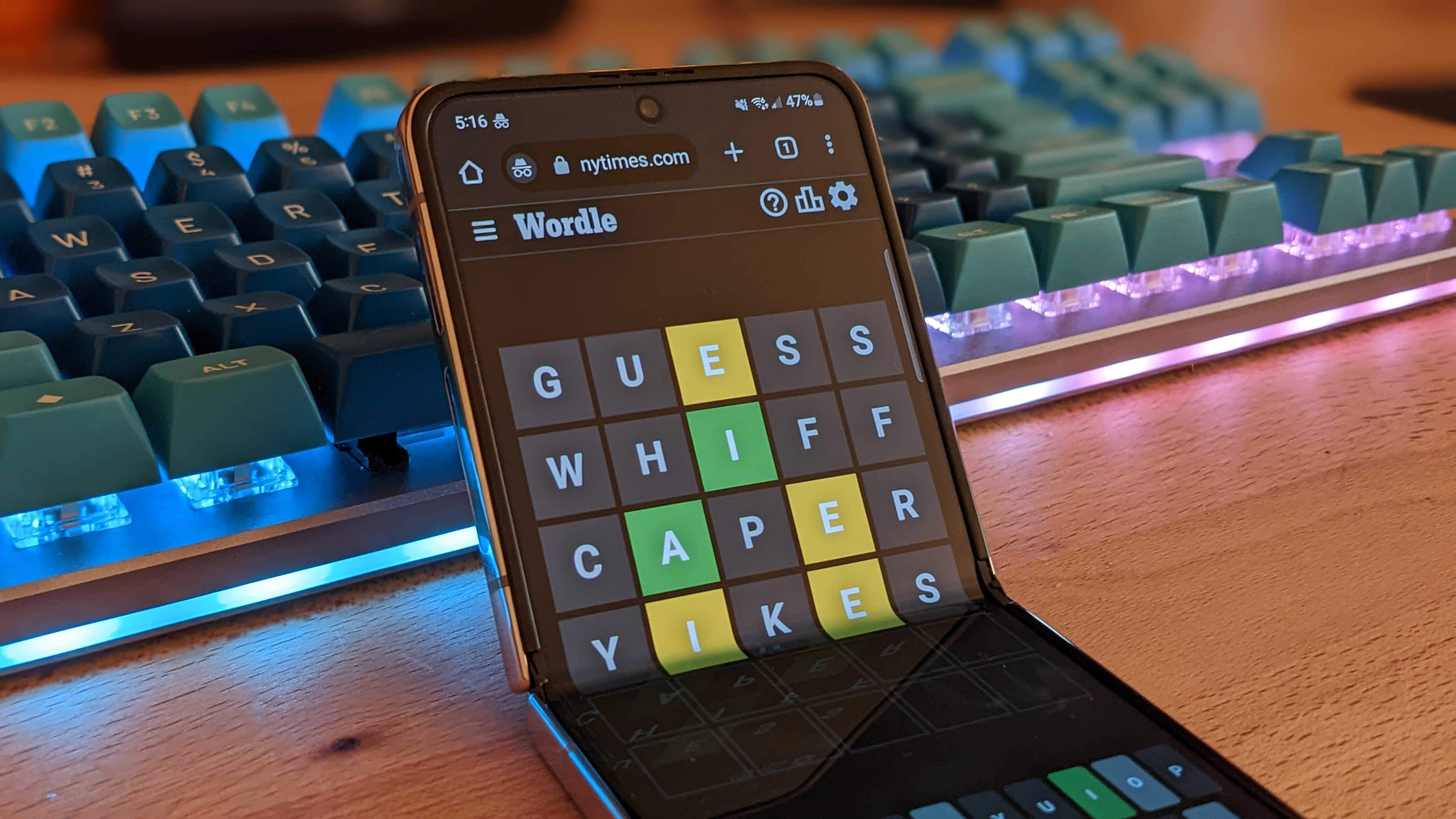
HTC Vive Focus Vision Review
Throughout 2024, standalone mixed-reality headset buzz has largely been a tossup between the Meta Quest 3, a standalone gaming headset with solid mixed-reality capabilities, and the Apple Vision Pro, a full-blown wearable computer that integrates into the entire Apple ecosystem. With that in mind, HTC’s new Vive Focus Vision – a PC gaming-focused headset that takes a few ideas from both the Apple Vision Pro and the Quest 3, may look like something of a Frankenstein’s monster. That’s because, even though it technically has standalone functionality and can technically be used to create media and play mixed-reality games, it is so much worse at doing those things than the Quest 3. And yet, thanks to its noticeably sharper 5K resolution, it manages to be a tad more competent at setting up a virtual workspace with a massive ultrawide display. However, unlike both the Quest 3 and the Apple Vision Pro, the HTC Vive Focus Vision is overwhelmingly geared toward traditional PC VR gaming with a wire – taking advantage of its unique lossless DisplayPort-to-USB-C streaming feature through Vive Hub.
Don’t get me wrong. There are a lot of goodies in this bag. A 5K combined (2,448 x 2,448 pixels per eye) resolution presented through dual Fresnel lenses offers a near-120-degree horizontal FOV at up to 90hz – or 120hz in PC streaming mode after an eventual update. Two half-rings of eye-tracking cameras surrounding both lenses support motorized auto-IPD adjustment and foveated rendering. Meanwhile, four inside-out tracking cameras give it pristine hand and controller tracking – which works great when the controllers aren’t bugging out. Official support for facial tracking and additional external trackers means you can rig it to make your avatar’s virtual face and limbs mimic your real-life features in social apps like VRChat.
For these reasons, the Vive Focus Vision narrowly beats the PlayStation VR2 for the best dedicated SteamVR headset I’ve ever owned – albeit by a thin margin. I’ve spent the past couple of weeks using it to play games like Blade & Sorcery, H3VR, Pavlov VR, and Half-Life: Alyx – though, for this use case, it doesn’t do anything super differently than the HTC Vive Focus 3 aside from being DisplayPort-compatible; a first for HTC’s Vive Focus series. Its standalone OS is simple but navigable, and its boundary-setting and room-scanning software is functional thanks to its decent full-color passthrough and built-in depth sensor. However, Viveport’s extremely limited selection of available games, very few of which use mixed reality, makes it seem like HTC hit all the standalone MR checkboxes just to say it could. At the least, at $999.99 the Vive Focus Vision is more affordable than its predecessor – which remains primarily enterprise-focused at its original $1,300 price – but again, it’s most clearly geared toward PC VR power users and location-based entertainment businesses, both of which will make great use of its convenient hot-swappable battery and magnetically-detachable, easy-to-clean facial interface.
HTC Vive Focus Vision – Design and Features
The HTC Vive Focus Vision has an all-black design that is both comfortable and visually pleasing. Its glossy front faceplate has a cool cyberpunk edge to it, and its standalone versatility makes it capable of covering every spatial computing need – kinda like a VR Swiss Army Knife – making it a viable option for those steering clear of both Meta and Apple.
It has built-in eye-tracking cameras, two 16MP full-color passthrough cameras, a depth sensor for mixed-reality room scanning and gaming, and an IR flood light for low-light hand tracking – all improvements over its 2021 predecessor, the Vive Focus 3. It’s also the first Vive Focus headset to offer lossless DisplayPort visuals via USB-C. Both devices use the now-outdated Snapdragon XR2 Gen 1 platform also used by the four-year-old Meta Quest 2, but at least the Vive Focus Vision gets an internal performance bump over its predecessor, pushing its RAM up from 8GB to 12GB.
One of the best parts of the Focus Vision being a member of the Vive Focus family is that it’s powered by a universal hot-swappable 7000mAh battery. I use the term “universal” because its battery is also compatible with previous Vive Focus devices, and, even better, it can be charged separately from the headset via a 30W AC charger – getting up to around 50% in 35-45 minutes in my own experience. As soon as you pull it out from behind the magnetic rear gasket, you have about 20 minutes of internal battery life to replace it – and once you do, the game simply goes on like nothing happened. If you’re using the Focus Vision while plugged into a computer, the battery life is extended much further – up to around seven hours. This is a huge deal for VR arcades and other businesses that cater to a lot of different potential users on the same day, but it also means the Vive Focus Vision stays usable for a much longer time.
Both the facial interface and the rear gasket (which stores the hot-swappable battery) can be easily pulled off and replaced via magnetic attachment, and they’re both pretty comfortable to wear for hours at a time, affording ample pleather padding for my face and the back of my head. That said, the Focus Vision is noticeably heavier while playing physically intense games than the Quest 3. But hey, at least they’re easy to clean and replace.
The Vive Focus Vision’s adjustable head strap can be described with one word: “cozy”. It stays put during periods of physical activity, which is not the case for the Quest 3 and Quest 3S’s default Y-style strap. Both the Focus Vision’s head strap and adjustment knob are easy to configure on the fly thanks to a release button on the back. There’s also a convenient auto-IPD function layered within the Focus Vision’s settings menu that takes – at most – a couple of seconds to set your display’s IPD (interpupillary distance) anywhere between 57 and 72 mm using those fancy eye-tracking cameras.
I commend the Focus Vision for providing a ton of space within the facial interface, which has remained comfortable without needing a ton of constant adjustment, and hasn’t left quite as visible a mark on my face after hours of usage as other headsets typically do. With the packed-in glasses spacer, this display is probably ideal for most glasses-wearers even when using the preinstalled light bleed guard, which sits comfortably below the lenses and blocks out all external light. For the record, that’s a big compliment, and I can’t say the same thing about the PS VR2 – which is one of my favorite VR headsets of all time.
On the other hand, the fan on the top of the Focus Vision’s visor is also quite big – and loud – making a racket even when I’m doing basic tasks like opening the headset’s internal internet browser. It can get distracting enough to remind me of the jet engine noises the base PS4 makes when it’s in distress, and that doesn’t evoke a great feeling when it’s coming from something attached to my face.
It’s cool that there are USB-C 3.2 ports in two places – one sitting on the right side of the headset while wearing it (next to the Aux-In jack) and a second one in the front section of the visor, hidden under a removable cover. According to other users, the second jack is typically only useful when adding USB-C accessories like external facial and body trackers, though I didn’t try those out during my review period, so I can’t speak to how well they work with the Focus Vision.
The only problem with this configuration is that, once a USB-C cable is plugged into the right side of the display, it often gets in the way. And without the wired connection, the headset’s Wi-Fi 6E driver doesn’t do a great job of staying connected to SteamVR via Vive Hub without showing significant artifacts and compression. That’s with ~200MB/s upload speeds – more than sufficient for a consistently stable experience with Virtual Desktop on the Quest 3 and 3S.
A nifty touch in the Focus Vision is the microSD slot that’s compatible with up to 2TB external storage. It’s cleverly hidden behind the detachable facial interface, though with 128GB built-in storage and a relatively small library of apps and games via the official Viveport store, I didn’t feel any compulsion to expand my storage – especially with a perfectly good VR-capable gaming PC at my fingertips.
The Vive Focus Vision includes two built-in directional 3D audio speakers on its left and right sides, sitting roughly around where my ears sit when the headset is snug to my face. This is another area where the Focus Vision beats other modern PC VR displays, the PS VR2, and even the Quest 3; the sound quality has been consistently crystal clear (when the fan wasn’t running on overdrive), and at times, peripheral sound sources coming from the left and right surround channels were so convincingly punchy that if I didn’t know better, I might’ve been convinced that Half-Life’s extraterrestrial invaders had taken over my real-life apartment.
It also comes packed with dual microphones enhanced by a built-in echo-cancellation feature hidden within the headset’s settings, and they sounded quite nice once I got them working in Windows. Meanwhile, similar to the recent Quest 3S, there is a volume button on the bottom and a neat action button on the left side which comfortably switches between immersive mode and full-color passthrough after a couple of quick taps.
HTC Vive Focus Vision – Setup and Controllers
Setting up the HTC Vive Focus Vision is largely the same process as with most other VR headsets. HTC requires you to create an account and set up the Vive Manager mobile app, a process that mirrors Meta’s process for setting up any Quest headset. But in all, it was a pretty simple exercise that only took around 25-30 minutes to get sorted before I could begin playing games in my SteamVR library. That said, there’s an extra set of steps to follow – and about 15-20 additional minutes of setup time – if you’re using the Vive Wired Streaming Kit to hardwire the Focus Vision into your gaming PC or Mac – either directly through USB-C or by using the Focus Vision-exclusive DisplayPort-to-USB-C adapter.
Setting up Vive Hub on PC is also pretty simple since it just requires an installer download from HTC’s website. After a quick installation process, the software plugs and plays seamlessly into SteamVR with a few tweaks. There’s also additional downloads for the Vive Streaming service, Vive Hub app, and Vive Desk service, the last of which is necessary if you’re planning on using it as a digital workspace. Finally, for PC VR gaming, it’s always a good idea to turn off Hardware-Accelerated GPU Scheduling for a smoother experience.
One of the bigger downsides of the Vive Focus Vision is its controllers. They use a typical dual-stick layout that’s consistent with the modern Touch Plus and Sense Controllers, which is great, but they’re lengthy, bulky, and unwieldy, often getting in the way of gameplay. Their issues are especially apparent when I’m physically unable to reload unconventional weapons in games like H3VR or swing a sword without hitting my face in Blade & Sorcery. The first example happened several times, while the second is more of an exaggeration – but the point is, it’s painfully awkward to play with these after being spoiled by the Quest 3’s far nimbler Touch Plus controllers.
All that bulkiness is bad enough, but they don’t seem to have a relatively long battery life either – staying alive for about three or four hours on a single charge. They also rely on USB-C to recharge, which runs counter to the hot-swapping capability of the headset’s main battery. They also simply stopped working on multiple occasions, forcing me to restart both SteamVR and Vive Hub, kicking me out of everything I’m doing in VR. Not great.
That said, it’s nice that the controllers don’t require an arduous setup process involving connecting them to Windows’ onboard Bluetooth. Instead, they connect wirelessly to the headset, which is a major step up from my experience hooking up my PS VR2 to my PC via the PS VR2 PC Adapter.
HTC Vive Focus Vision – Gaming Performance
If you’re planning on buying the Vive Focus Vision primarily for standalone VR or mixed-reality gaming, you might want to hold off – at least until HTC fills up its content library. Right now, the software framework is all there – the internal GUI is straightforward to navigate, with well-structured menus, useful tutorials, easy-to-set-up virtual boundaries with an initial cap of 10×10 meters, and so forth – though it’s all noticeably slower than I’m used to as a Quest 3 power user. For instance, reorienting my view in the Vive Focus Vision takes an additional few seconds to kick in after holding down the Vive’s equivalent of the “Home” button for two or three seconds, whereas the same feature is near-instant on the Quest 3.
The Vive Focus Vision also just feels behind when running standalone games and experiences. That’s because it relies on a years-old Snapdragon XR2 Gen 1 processor to push outdated content through Fresnel lenses at 2,448 x 2,448 (5K) per-eye resolution – creating a worst-of-both-worlds scenario. After all, not only are those old games’ visual wrinkles magnified at higher resolutions and with god rays typical of Fresnel lenses, but they’re just slow – giving inconsistent performance and jittery frames. Oh yeah, and they’re loud, no thanks to that pesky onboard fan I mentioned earlier.
But still, on paper, it has all the features a typical user might want for a modern standalone headset – like mixed-reality room-scanning that remembers the geometry of each object in a given playspace, and reasonably good-looking full-color passthrough. Once they get working, they work almost as well as on the Quest 3. The biggest problem is that the Viveport store betrays a much emptier content library, with only barebones offerings compared to Meta’s abundant-by-comparison ecosystem. There’s no Supernatural nor PianoVision, but hey, at least there’s Les Mills Bodycombat and a port of Google Tilt Brush, called Open Brush. Those certainly aren’t bad, but I haven’t even gotten to the games yet. The lack of selection is immediately apparent and bodes poorly for those hoping to make the Focus Vision their primary standalone VR headset.
Once you plug it into a gaming PC is where the Vive Focus Vision finally, truly shines. Jacking it in through my Nvidia RTX 4070 Ti’s DisplayPort on my desktop (via HTC’s Wired Streaming Kit, sold separately), my experience skyrocketed. I was immediately struck by the display’s outstandingly rich color depth, surprisingly deep blacks, and some of the crispest graphics I’ve experienced on any of my headsets. Somehow, HTC managed to achieve this with plain old Fresnel lenses. All I needed to do was set the graphics to Auto in Vive Hub on my desktop and the Focus Vision gave me true 5K PC VR at 90hz, supported by foveated rendering. By the way, the latter makes everything look gorgeously detailed without a performance dip, even without having the benefit of infinite contrast from OLED lenses or the inherent clarity of pancake lenses.
The downside here is that, if I want to fiddle with my system settings or adjust my IPD while using SteamVR, I have to completely exit Vive Streaming mode and go back to standalone mode, jarring me away from whatever I’m doing on my PC. This element of the Vive Focus Vision’s standalone OS feels like a work in progress, which is baffling since SteamVR is the device’s bread and butter. Speaking of, HTC promises an eventual update unlocking a 120hz mode on PC, but it’s not available yet. That’s less of a big deal, however, since even though I was stuck at a cap of 90 frames per second, the Vive Focus Vision pumped out consistently stable framerates in SteamVR throughout my entire two-week testing period.
Even better, the Focus Vision’s display provides a near-120-degree horizontal viewing angle that beats every other headset I’ve recently tested. I can finally see everything happening around me when looking directly in front of me (even though the black edges of the display are still visible when deliberately looking left and right). The vertical viewing angle isn’t quite as proportional, and there is sometimes a slight visible fish-eye effect when looking directly at a subject up close. But even so, there’s much less of a feeling of wearing VR “goggles” and it’s far easier to get pulled deeper into atmospheric games like Half-Life: Alyx. The Focus Vision’s wider FOV (paired together with its 3D-accurate spatial audio speakers) is an obvious boon for competitive gamers who don’t want to be easily jumped by enemy players in online games like Pavlov VR, and eventually, 120hz mode will help out there too.
Vive Desk transforms the Vive Focus Vision into a virtual office with up to three digital monitors or one 21:9 ultrawide, speaking directly to a connected PC or Mac. This is where passthrough becomes especially useful for work, as you can designate a specific area of your real-life desk to appear inside of the virtual environment at all times, and it’s cool that you can use your PC’s mouse to manipulate the size and location of Vive Desk’s virtual displays.
Disappointingly, there is still no officially-supported way to play exclusives from Meta’s back catalog of PC VR games – like Lone Echo or Asgard’s Wrath – on non-Meta headsets like the Vive Focus Vision. At least, not without going through outdated and potentially unsupported third-party software. This is a huge missed opportunity for those old games that would benefit massively from the Vive Focus Vision’s hardware.













